-
 Bitcoin
Bitcoin $79,751.2585
-4.17% -
 Ethereum
Ethereum $1,528.5818
-8.78% -
 Tether USDt
Tether USDt $0.9994
-0.04% -
 XRP
XRP $1.9747
-4.76% -
 BNB
BNB $576.4788
-1.22% -
 USDC
USDC $0.9997
-0.03% -
 Solana
Solana $113.0849
-5.62% -
 Dogecoin
Dogecoin $0.1540
-5.27% -
 TRON
TRON $0.2365
-0.39% -
 Cardano
Cardano $0.6064
-5.34% -
 UNUS SED LEO
UNUS SED LEO $9.4091
0.49% -
 Chainlink
Chainlink $12.0846
-5.35% -
 Avalanche
Avalanche $18.2960
-1.72% -
 Toncoin
Toncoin $2.9528
-7.42% -
 Hedera
Hedera $0.1689
-1.30% -
 Stellar
Stellar $0.2306
-5.26% -
 Shiba Inu
Shiba Inu $0.0...01166
-3.63% -
 Sui
Sui $2.0992
-6.89% -
 MANTRA
MANTRA $6.4075
-4.41% -
 Bitcoin Cash
Bitcoin Cash $291.4815
-5.28% -
 Litecoin
Litecoin $73.5505
-4.41% -
 Polkadot
Polkadot $3.4875
-5.77% -
 Dai
Dai $0.9999
-0.03% -
 Bitget Token
Bitget Token $4.2077
-1.17% -
 Ethena USDe
Ethena USDe $0.9987
-0.05% -
 Hyperliquid
Hyperliquid $14.2317
1.76% -
 Pi
Pi $0.5894
-3.24% -
 Monero
Monero $200.6204
-2.27% -
 OKB
OKB $52.8116
-1.74% -
 Uniswap
Uniswap $5.0373
-7.90%
How is the forced liquidation mechanism in Binance margin trading triggered?
Forced liquidation on Binance occurs when the margin level falls below the maintenance margin, prompting the platform to close positions to prevent further losses.
Apr 05, 2025 at 11:21 pm
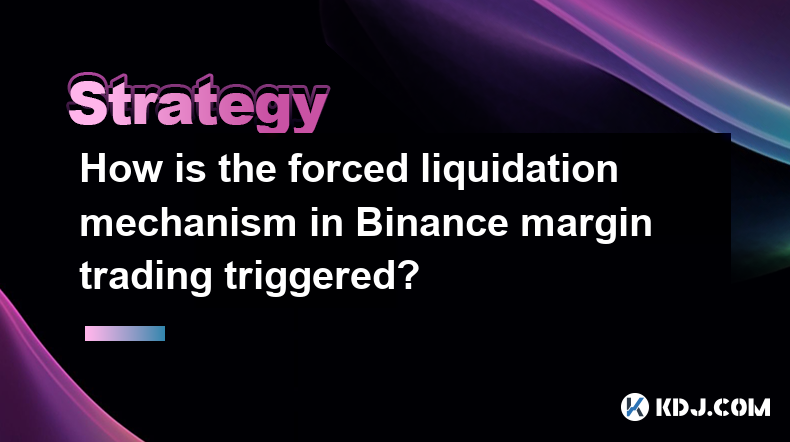
In the world of cryptocurrency trading, margin trading on platforms like Binance offers traders the opportunity to amplify their potential returns by borrowing funds to increase their trading position. However, with higher potential returns comes increased risk, including the possibility of forced liquidation. Understanding how the forced liquidation mechanism in Binance margin trading is triggered is crucial for any trader looking to navigate these waters safely.
What is Forced Liquidation?
Forced liquidation is a process initiated by the trading platform when a trader's account falls below the maintenance margin requirement. This mechanism is designed to protect both the trader and the platform from further losses. When a trader's position moves against them, and their account equity dips below the required threshold, the platform will automatically close the position to prevent further losses.
How is Forced Liquidation Triggered on Binance?
The forced liquidation mechanism on Binance is triggered when the account's margin level falls below the maintenance margin level. The margin level is calculated as the ratio of the account's equity to the used margin. Specifically, the formula for the margin level is:
[ \text{Margin Level} = \frac{\text{Account Equity}}{\text{Used Margin}} \times 100 ]
If the margin level drops below the maintenance margin level, which is set at 1.3 for isolated margin and 1.1 for cross margin on Binance, the platform will initiate the liquidation process.
Understanding Margin Levels and Maintenance Margin
To better understand how forced liquidation is triggered, it's important to grasp the concepts of margin levels and maintenance margin. Margin level is a measure of the account's health, indicating how much of the trader's equity is being used to maintain open positions. Maintenance margin is the minimum margin level required to keep positions open. If the margin level falls below this threshold, the position is at risk of liquidation.
The Role of Account Equity and Used Margin
Account equity is the total value of the trader's account, including unrealized profits and losses. Used margin is the amount of funds currently being used to maintain open positions. As market prices fluctuate, the account equity can change, affecting the margin level. If the market moves against the trader's position, the account equity decreases, potentially pushing the margin level below the maintenance margin and triggering liquidation.
Steps Leading to Forced Liquidation
When the margin level approaches the maintenance margin, Binance will issue a margin call, alerting the trader to the risk of liquidation. If the trader does not take action to increase their margin level by depositing more funds or closing part of their position, the platform will proceed with the following steps:
- Monitoring the Margin Level: Binance continuously monitors the margin level of all accounts.
- Issuing a Margin Call: When the margin level approaches the maintenance margin, a margin call is issued.
- Initiating Liquidation: If the margin level falls below the maintenance margin, the platform will automatically start the liquidation process.
- Closing Positions: The platform will close the trader's positions starting with the most unprofitable ones until the margin level is restored above the maintenance margin.
Example of Forced Liquidation on Binance
To illustrate how forced liquidation works, consider a trader who opens a long position on Bitcoin with a margin of $10,000. If the price of Bitcoin drops significantly, the account equity might fall to $9,000. The margin level would then be calculated as:
[ \text{Margin Level} = \frac{9000}{10000} \times 100 = 90\% ]
If the maintenance margin for isolated margin is 130%, the margin level of 90% is well below the threshold, triggering forced liquidation. Binance would then close the trader's position to prevent further losses.
How to Avoid Forced Liquidation
Traders can take several steps to avoid forced liquidation:
- Monitor Margin Levels: Regularly check the margin level to ensure it remains above the maintenance margin.
- Use Stop-Loss Orders: Implement stop-loss orders to automatically close positions if the market moves against them.
- Deposit Additional Funds: If a margin call is issued, deposit more funds to increase the account equity and margin level.
- Reduce Position Size: Close part of the position to reduce the used margin and increase the margin level.
The Impact of Forced Liquidation
Forced liquidation can have significant impacts on a trader's account. It can result in the loss of the entire position, including any unrealized profits. Additionally, the trader may still owe money to the platform if the liquidation does not cover the borrowed funds. Understanding these risks is essential for managing margin trading effectively.
Frequently Asked Questions
Q: Can I set a custom maintenance margin level on Binance?
A: No, Binance sets the maintenance margin levels for isolated and cross margin trading, and these cannot be customized by individual traders.
Q: What happens if I am not online when a margin call is issued?
A: If you are not online when a margin call is issued, Binance will still proceed with the liquidation process if the margin level falls below the maintenance margin. It is crucial to monitor your positions regularly or use stop-loss orders to manage risk.
Q: Can I recover my position after it has been liquidated?
A: Once a position is liquidated, it cannot be recovered. The position is closed, and any remaining funds are credited to your account. To re-enter the market, you would need to open a new position.
Q: Does Binance charge any fees for forced liquidation?
A: Yes, Binance may charge a liquidation fee to cover the costs associated with closing the position. The specific fee structure can be found in Binance's fee schedule.
Disclaimer:info@kdj.com
The information provided is not trading advice. kdj.com does not assume any responsibility for any investments made based on the information provided in this article. Cryptocurrencies are highly volatile and it is highly recommended that you invest with caution after thorough research!
If you believe that the content used on this website infringes your copyright, please contact us immediately (info@kdj.com) and we will delete it promptly.
- Bitcoin and other cryptocurrencies have been extremely volatile
- 2025-04-11 06:55:12
- As Bitcoin Consolidates, These 5 Altcoins Are Poised to Explode in the Next Bull Market
- 2025-04-11 06:55:12
- Amid Ongoing Volatility, LINK Is Poised to Decline
- 2025-04-11 06:50:12
- SHIB whales shift focus as Lightchain AI's $18.9m presale and bold forecasts spark buzz
- 2025-04-11 06:50:12
- Gold Prices Reach New Record High Amid Escalating U.S.-China Trade Tensions
- 2025-04-11 06:45:12
- title: Binance Adds Support for New Bitcoin (BTC) Staking Protocol Babylon (BABY)
- 2025-04-11 06:45:12
Related knowledge
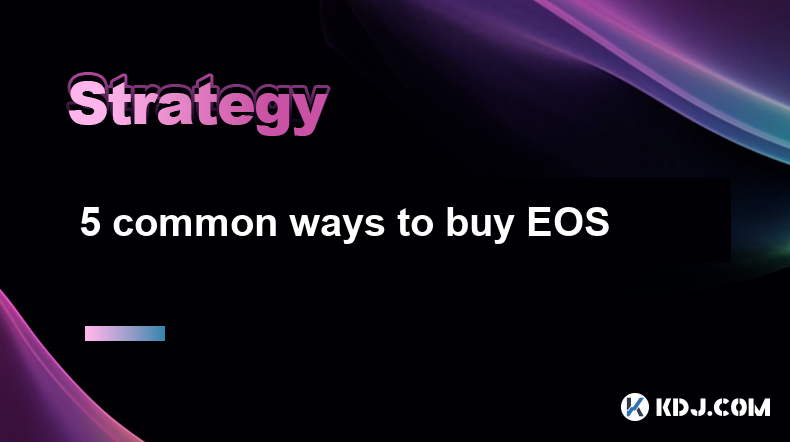
5 common ways to buy EOS
Apr 10,2025 at 01:14am
When it comes to purchasing EOS, one of the prominent cryptocurrencies in the blockchain ecosystem, there are several methods you can use. Each method has its own set of advantages and considerations. In this article, we will explore five common ways to buy EOS, providing a detailed guide on how to navigate each option effectively. Using Cryptocurrency ...
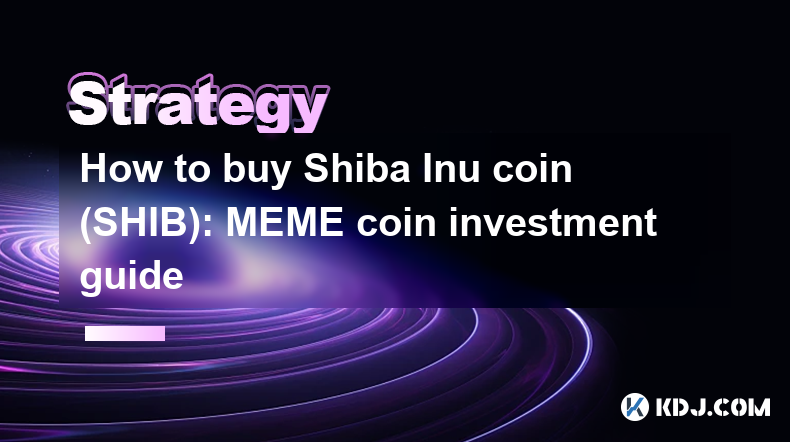
How to buy Shiba Inu coin (SHIB): MEME coin investment guide
Apr 10,2025 at 07:42am
Buying Shiba Inu coin (SHIB), a popular meme coin, can be an exciting venture into the world of cryptocurrency. This guide will walk you through the steps to purchase SHIB, provide insights into the coin's background, and offer tips on managing your investment. Whether you're a seasoned crypto investor or a newcomer, understanding how to buy and manage ...

A complete guide to buying Solana (SOL): Mobile/computer dual platform teaching
Apr 11,2025 at 02:50am
A Complete Guide to Buying Solana (SOL): Mobile/Computer Dual Platform Teaching Purchasing Solana (SOL), one of the leading cryptocurrencies known for its high throughput and low transaction costs, can be done through various platforms. This guide will walk you through the process of buying SOL on both mobile and computer platforms, ensuring you have a ...
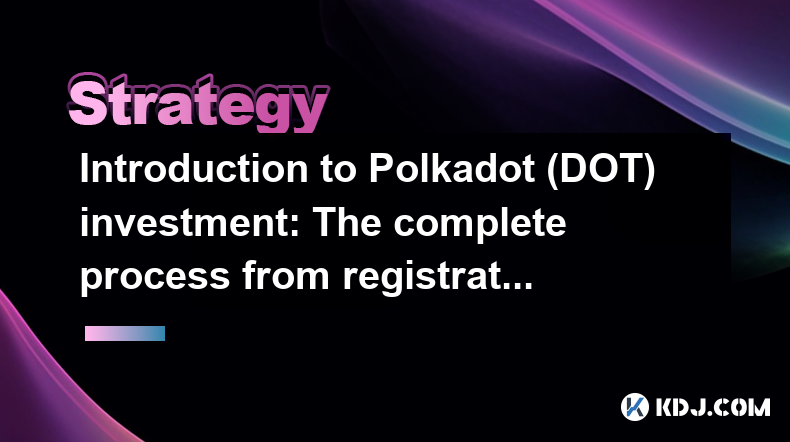
Introduction to Polkadot (DOT) investment: The complete process from registration to purchase
Apr 10,2025 at 09:21pm
Introduction to Polkadot (DOT) Investment: The Complete Process from Registration to Purchase Polkadot (DOT) has emerged as a significant player in the cryptocurrency market, offering a unique approach to blockchain interoperability. For those interested in investing in DOT, understanding the complete process from registration to purchase is crucial. Th...
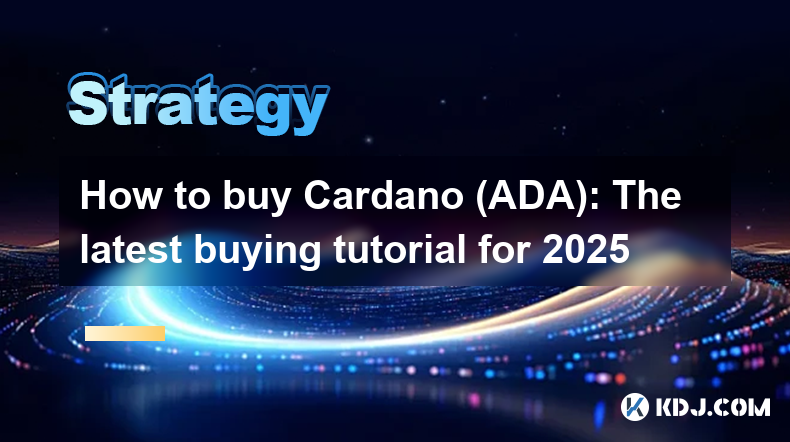
How to buy Cardano (ADA): The latest buying tutorial for 2025
Apr 09,2025 at 01:21am
Introduction to Cardano (ADA)Cardano (ADA) is a blockchain platform that aims to provide a more secure and scalable infrastructure for the development of decentralized applications and smart contracts. Created by Charles Hoskinson, one of the co-founders of Ethereum, Cardano differentiates itself through its rigorous academic approach and peer-reviewed ...
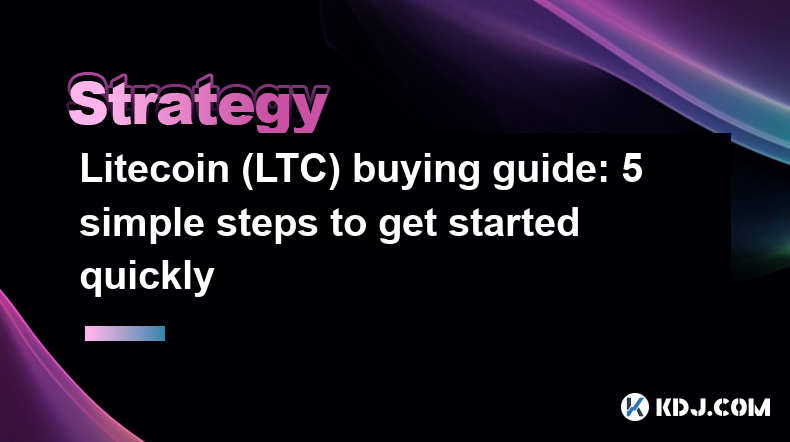
Litecoin (LTC) buying guide: 5 simple steps to get started quickly
Apr 09,2025 at 07:21pm
Litecoin (LTC) is a popular cryptocurrency that was created as a fork of Bitcoin. It offers faster transaction times and lower fees, making it an attractive option for many users. If you're interested in buying Litecoin, this guide will walk you through the process in five simple steps. Let's get started. Step 1: Choose a Reliable Cryptocurrency Exchang...

5 common ways to buy EOS
Apr 10,2025 at 01:14am
When it comes to purchasing EOS, one of the prominent cryptocurrencies in the blockchain ecosystem, there are several methods you can use. Each method has its own set of advantages and considerations. In this article, we will explore five common ways to buy EOS, providing a detailed guide on how to navigate each option effectively. Using Cryptocurrency ...

How to buy Shiba Inu coin (SHIB): MEME coin investment guide
Apr 10,2025 at 07:42am
Buying Shiba Inu coin (SHIB), a popular meme coin, can be an exciting venture into the world of cryptocurrency. This guide will walk you through the steps to purchase SHIB, provide insights into the coin's background, and offer tips on managing your investment. Whether you're a seasoned crypto investor or a newcomer, understanding how to buy and manage ...

A complete guide to buying Solana (SOL): Mobile/computer dual platform teaching
Apr 11,2025 at 02:50am
A Complete Guide to Buying Solana (SOL): Mobile/Computer Dual Platform Teaching Purchasing Solana (SOL), one of the leading cryptocurrencies known for its high throughput and low transaction costs, can be done through various platforms. This guide will walk you through the process of buying SOL on both mobile and computer platforms, ensuring you have a ...

Introduction to Polkadot (DOT) investment: The complete process from registration to purchase
Apr 10,2025 at 09:21pm
Introduction to Polkadot (DOT) Investment: The Complete Process from Registration to Purchase Polkadot (DOT) has emerged as a significant player in the cryptocurrency market, offering a unique approach to blockchain interoperability. For those interested in investing in DOT, understanding the complete process from registration to purchase is crucial. Th...

How to buy Cardano (ADA): The latest buying tutorial for 2025
Apr 09,2025 at 01:21am
Introduction to Cardano (ADA)Cardano (ADA) is a blockchain platform that aims to provide a more secure and scalable infrastructure for the development of decentralized applications and smart contracts. Created by Charles Hoskinson, one of the co-founders of Ethereum, Cardano differentiates itself through its rigorous academic approach and peer-reviewed ...

Litecoin (LTC) buying guide: 5 simple steps to get started quickly
Apr 09,2025 at 07:21pm
Litecoin (LTC) is a popular cryptocurrency that was created as a fork of Bitcoin. It offers faster transaction times and lower fees, making it an attractive option for many users. If you're interested in buying Litecoin, this guide will walk you through the process in five simple steps. Let's get started. Step 1: Choose a Reliable Cryptocurrency Exchang...
See all articles




















![🐢Super Mario World Koopa Troopa 100% 96⭐️ + Coin [Ao Vivo] 🐢Super Mario World Koopa Troopa 100% 96⭐️ + Coin [Ao Vivo]](/uploads/2025/04/10/cryptocurrencies-news/videos/super-mario-koopa-troopa-coin-ao-vivo/image-1.webp)


































































